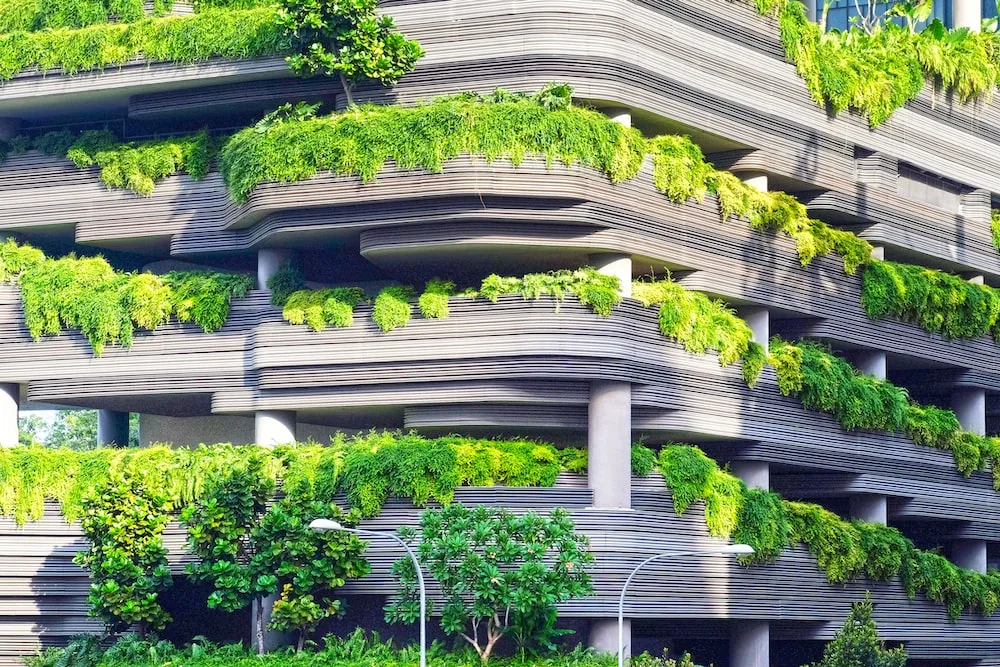
The construction industry has long been synonymous with pollution and waste. Traditional building materials such as concrete, steel, and bricks have a significant environmental impact. As the world becomes more conscious of sustainability, there is a growing need for alternative building solutions that are environmentally friendly. One such solution lies in an unexpected place – the humble coconut husk.
The Environmental Impact of Traditional Building Materials
Before we delve into the potential of coconut husk as a building material, let’s first understand the environmental impact of traditional construction materials. Concrete, for example, is responsible for a significant portion of global carbon dioxide emissions. The production of cement, the main component of concrete, requires immense energy and releases substantial amounts of greenhouse gases. Steel production also contributes to carbon emissions, as well as deforestation and habitat destruction due to mining activities. Bricks, on the other hand, require the burning of fossil fuels, releasing harmful pollutants into the atmosphere.
The Hidden Potential of Coconut Husk
Coconut husks, which have long been treated as waste and discarded, hold immense potential as a green building material. The husk is composed of fibers that are strong, flexible, and resistant to decay. These qualities make it an excellent substitute for traditional building materials. The use of coconut husk not only reduces waste but also provides an eco-friendly alternative that can significantly lower the environmental impact of construction.
Advantages of Using Coconut Husk as a Building Material
There are several advantages to using coconut husk as a building material. First and foremost, it is a renewable resource. Coconuts are abundantly available in many tropical regions, making the husk a sustainable choice. Additionally, coconut husk is lightweight, which reduces the need for heavy machinery during construction. This not only saves energy but also reduces the carbon footprint of the project. Furthermore, coconut husk is an excellent insulator, providing natural thermal regulation and reducing the need for additional insulation materials.
Coconut Husk in Construction: Applications and Examples
Coconut husk can be used in various applications within the construction industry. One of the most common uses is as a substitute for traditional insulation materials. The fibers of the husk can be processed into mats or boards that provide excellent thermal and sound insulation. These mats can be used in walls, ceilings, and roofs to regulate temperature and reduce noise pollution.
Another application of coconut husk is in the production of lightweight concrete blocks. The fibers of the husk are mixed with cement to create a composite material that is strong, durable, and environmentally friendly. These blocks can be used for walls, partitions, and even structural elements of a building.
Several examples around the world showcase the successful implementation of coconut husk in construction. In the Philippines, for instance, a hotel was constructed entirely using coconut husk-based materials. The hotel’s walls, roof, and even furniture were made from coconut husk fibers, showcasing the versatility and potential of this natural resource.
Challenges and Limitations of Using Coconut Husk for Building
While coconut husk holds great promise as a building material, there are also challenges and limitations to consider. One challenge is the lack of large-scale production and accessibility. Coconut husk-based materials are not yet widely available in the market, and the infrastructure for their production is still developing. Additionally, the durability of coconut husk-based materials can be a concern, especially in areas prone to extreme weather conditions. Proper treatment and maintenance are crucial to ensure the longevity and stability of structures made from coconut husk.
Innovations and Advancements in Coconut Husk Building Solutions
Efforts are underway to address the challenges and limitations of using coconut husk for building. Researchers and innovators are continuously exploring new techniques and technologies to improve the production, durability, and scalability of coconut husk-based materials. One such innovation is the development of biocomposite materials using coconut husk fibers and bio-based resins. These biocomposites offer increased strength and durability, opening the door to a wider range of applications in the construction industry.
Sustainability Benefits of Coconut Husk for Green Building
The use of coconut husk in construction offers numerous sustainability benefits. Firstly, it helps reduce waste by utilizing a byproduct that would otherwise end up in landfills or be burned, contributing to air pollution. Secondly, coconut husk-based materials have a lower carbon footprint compared to traditional building materials. The production process requires less energy and emits fewer greenhouse gases. Additionally, the renewable nature of coconut husk ensures a continuous supply without depleting natural resources.
How to Incorporate Coconut Husk into Your Building Projects
If you are interested in incorporating coconut husk into your building projects, there are a few steps to consider. First, familiarize yourself with the available coconut husk-based materials and their specific applications. Research local suppliers or explore the possibility of producing the materials yourself if feasible. Ensure that proper treatment and maintenance protocols are followed to maximize the durability and longevity of the structures. Finally, collaborate with architects, engineers, and contractors who are knowledgeable about coconut husk building solutions to ensure a smooth and successful implementation.
Conclusion: Embracing the Future of Sustainable Construction with Coconut Husk
Coconut husk has immense potential as a green building solution. Its properties make it a viable substitute for traditional materials, reducing waste and minimizing the environmental impact of construction. While challenges and limitations exist, ongoing innovations and advancements are paving the way for wider adoption of coconut husk-based materials. By embracing this natural resource, we can contribute to a more sustainable future and build a greener world.
CTA: Explore the possibilities of coconut husk in your next construction project and be a part of the sustainable building revolution.






